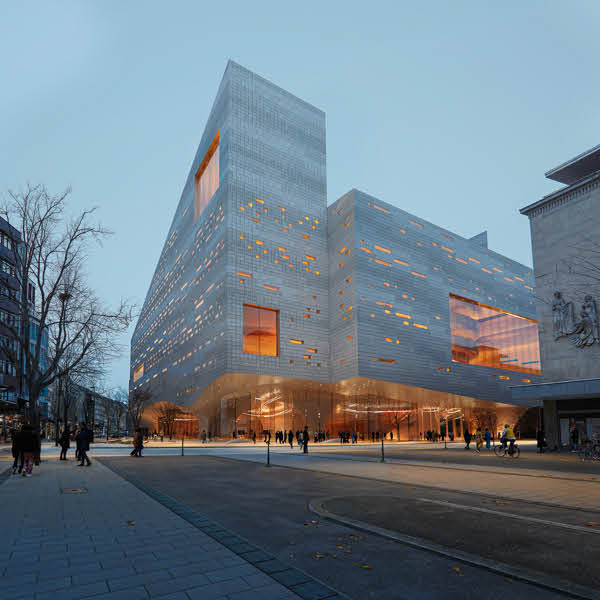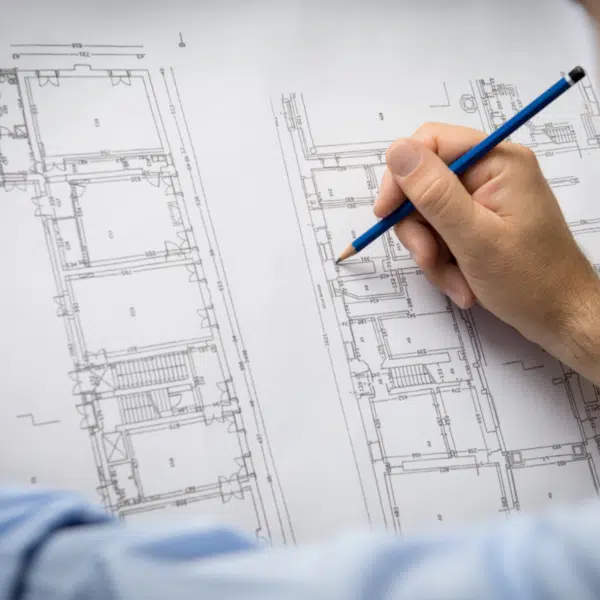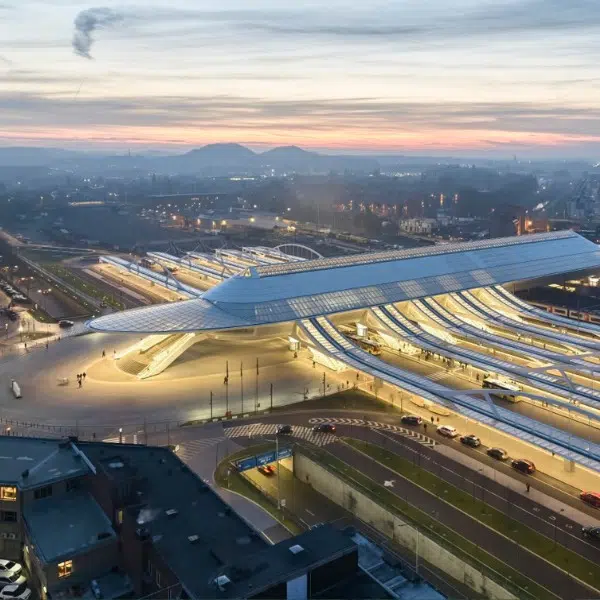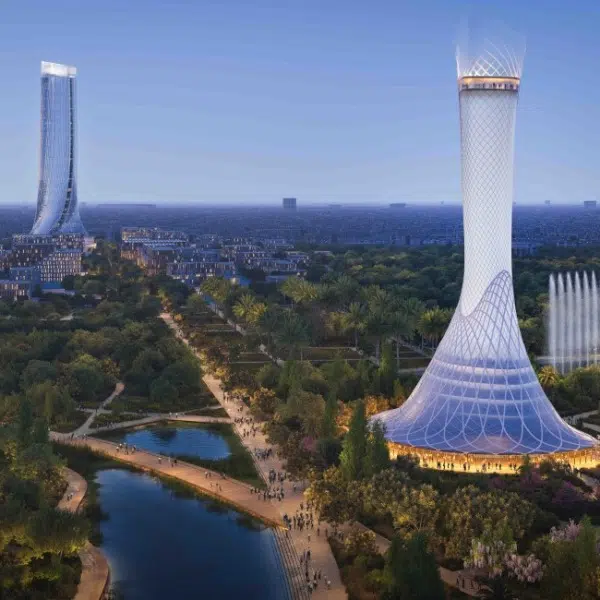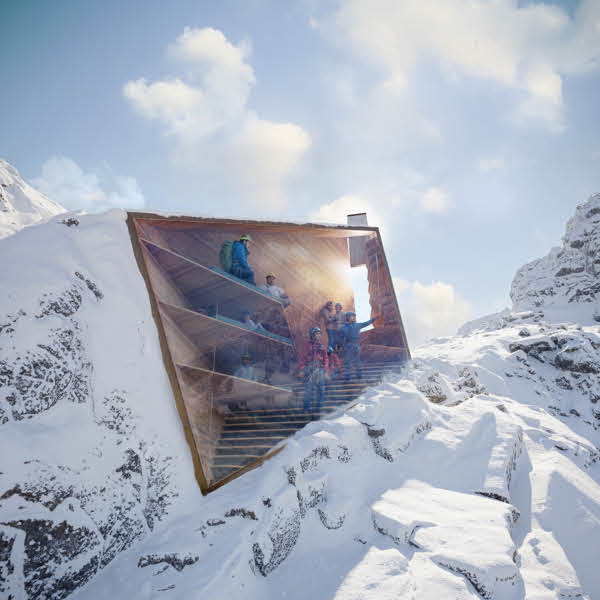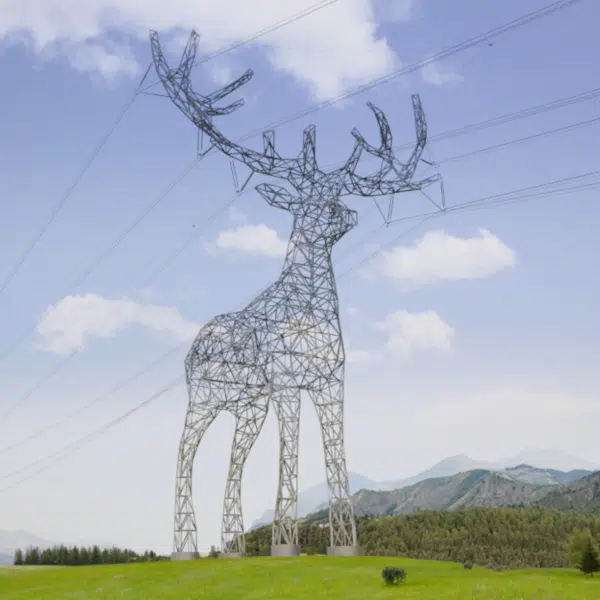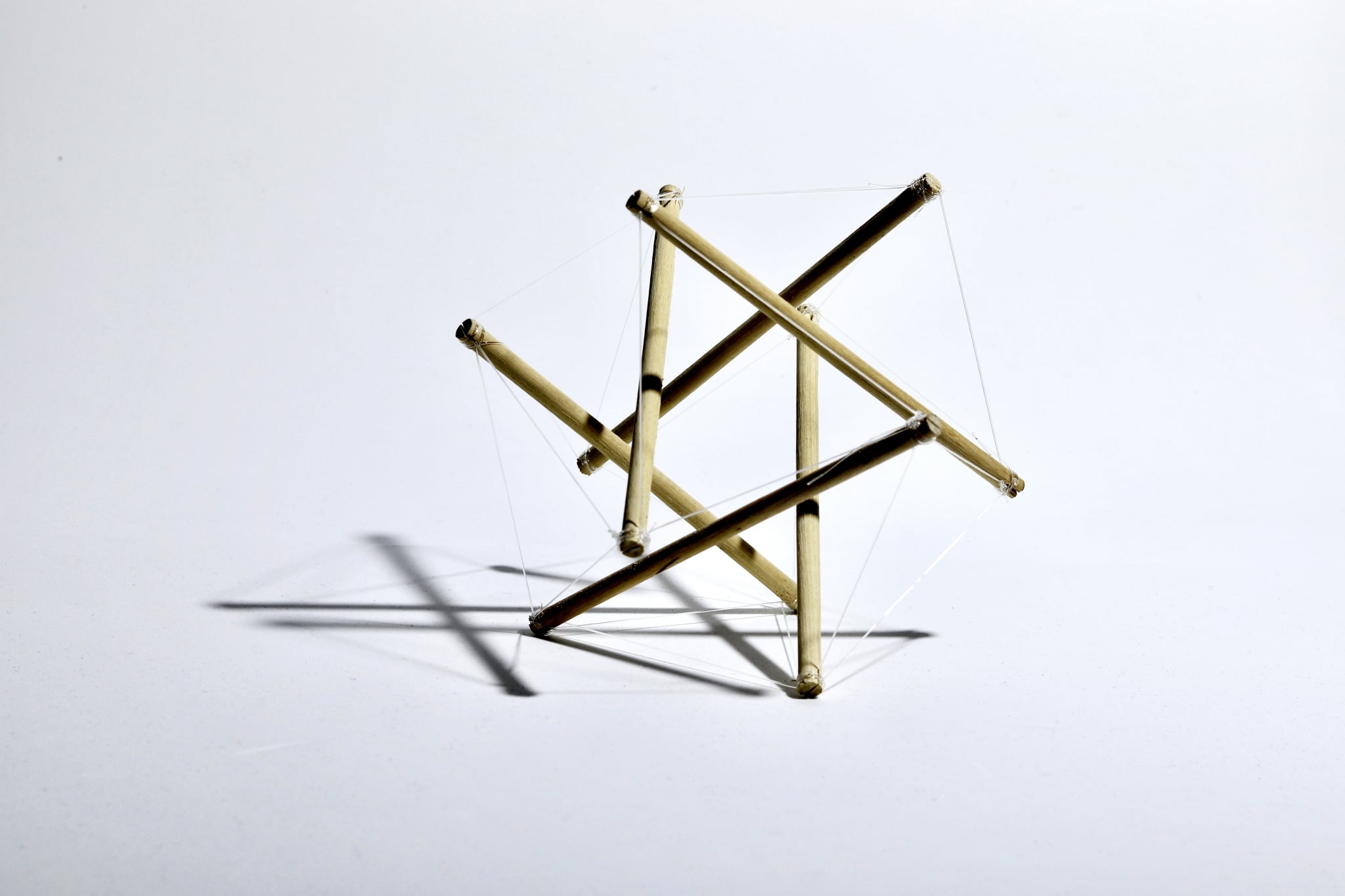
Photo: Stock Photos from 1024 Oliver Loesser/Shutterstock
Think back to your high school physics class. You may remember drawing force diagrams with arrows signifying gravity and some outside variables. The arrows were probably forces that work in compression. The ancient pyramids are a classic example of this form of building. By creating a larger base and stacking taller and taller, a structure can be created. Tensegrity is precisely the opposite—rather than focusing on a heavy foundation, tensegrity structures work through tension.
Origins of Tensegrity
The term tensegrity was first used by legendary architect Buckminster Fuller during his experimentation with alternative structural systems. Fuller described works of tensegrity as “self-tensioning structures composed of rigid structures and cables, with forces of traction and compression, which form an integrated whole.” He also believed that works of tensegrity were more natural than works of solely compression, as similar systems are found in the biology of living creatures, such as the combination of biological material to allow motion.
Today, these structures can be found around the world on a variety of scales from sculpture to bridges to airports. Read on to see eight great examples of tensegrity and to learn how you can implement this style in your own work.
Gravity-Defying Examples of Tensegrity Around the World
Needle Tower by Kenneth Snelson

Photo: Stock Photos from Bakusova/Shutterstock
Designed by artist Kenneth Snelson for the Hirshhorn Museum and Sculpture Garden in Washington, D.C., the Needle Tower is one of the most iconic examples of tensegrity. Snelson studied closely under Buckminster Fuller and has since made a career of similar sculptures in this style. In this particular work, Snelson uses aluminum tubes that act in compression and are held up by tension created through steel cables attached at the ends of each tube.
Though the balance of compression and tension is delicate work, Snelson is able to place structural members to create a complete composition. When standing in the middle of the tower, viewers will notice the six-pointed Star of David. Though when viewing from afar, the steel cables seem to disappear, leaving thick aluminum tubes to float in midair.
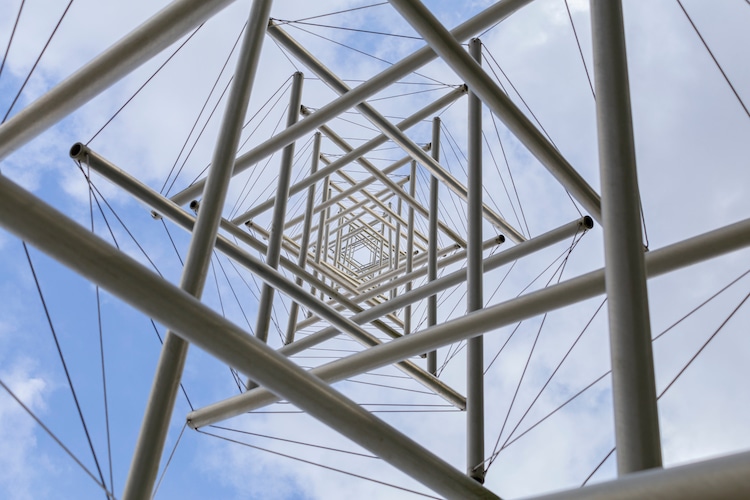
Photo: Stock Photos from HildaWeges Photography/Shutterstock
Munich Olympic Stadium
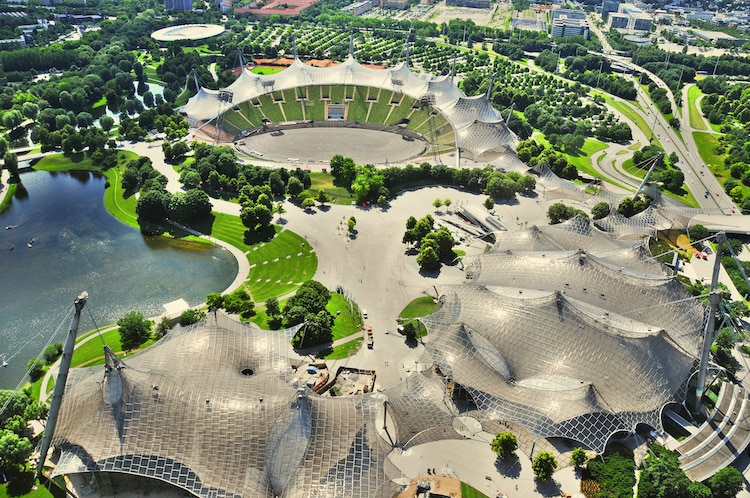
Photo: Stock Photos from meunierd/Shutterstock
The Munich Olympic Stadium was designed by Frei Otto, an architect and structural engineer who specialized in similar structures. Otto’s experiences of building tents in World War II inspired him to research and innovate with tensile structures as they could be created with minimal material and minimal costs.
The stadium is a testament to Otto’s innovation. The grand public space proves that such a use of tensegrity is not only feasible, but is capable of making beautiful architecture.

Photo: Stock Photos from Sahara Prince/Shutterstock
The Biosphere
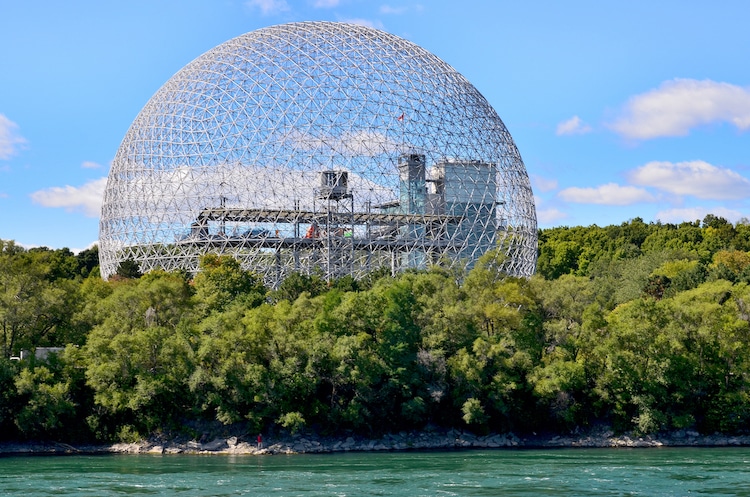
Photo: Stock Photos from meunierd/Shutterstock
The Biosphere, aka Montreal Biosphere, is an environmental museum with a sublime dome structure that fully integrates the visual allure of tensegrity. This architectural masterpiece was designed by architect Buckminster Fuller. Though Fuller is best known for his geodesic domes, he also wrote and taught extensively about tensegrity following his invention of the term. His teachings have gone on to influence others, including artist Kenneth Snelson.

Photo: Stock Photos from meunierd/Shutterstock
Kurilpa Bridge

Photo: Stock Photos from Tupungato/Shutterstock
The Kurilpa Bridge was designed by Cox Rayner Architects and Arup Engineers as the world’s largest hybrid tensegrity bridge. It is approximately 1,500 feet long and balances between large aluminum masts and light steel cables to accomplish the tensile structure.
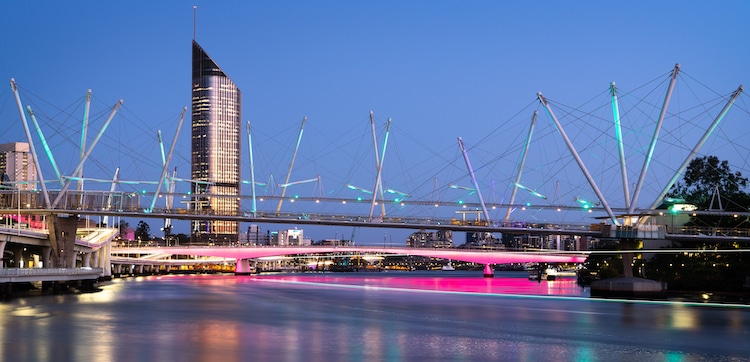
Photo: Stock Photos from Shane Spoor/Shutterstock
Dissipate at Afrikaburn
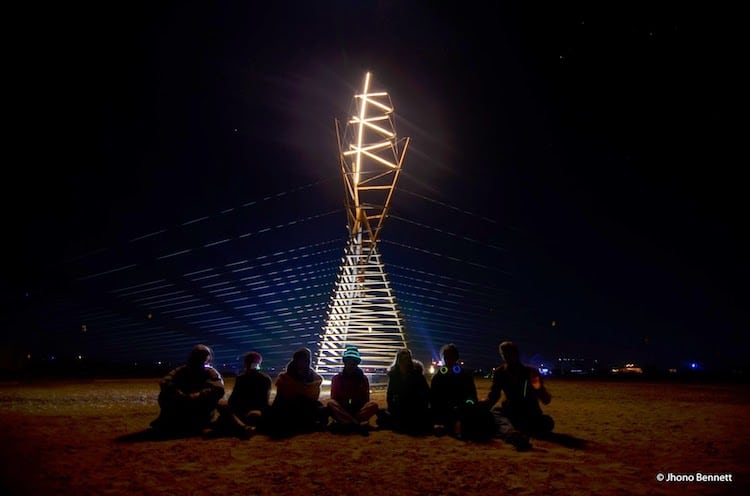
Photo: Jhono Bennett
This 2015 design-build project was completed as part of a South African version of the American Burning Man event. The project was completed by Thomas Van Deventer and his design colleagues through a crowdfunding campaign and independent construction.
Dissipate gradually transitions from a traditional structure to one that is more clearly tensile as it reaches the top. The project is documented by Jhono Bennett.
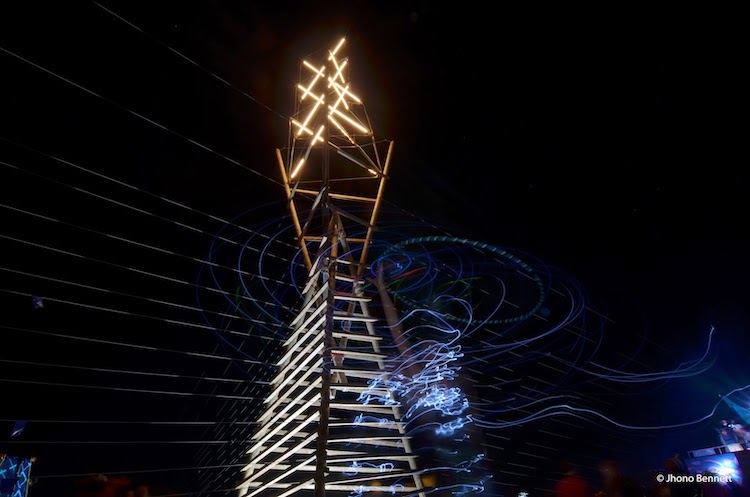
Photo: Jhono Bennett
NASA Super Ball Bot

Photo: NASA SuperBall
NASA’s Super Ball Bot is a truly unique tensile structure as it is the only one on this list to be used outside of Earth. Acting as a landing and mobility platform, the ball can be dropped from high altitudes without suffering damage due to its flexibility. Like many tensegrity structures, Super Ball Bot also uses less material and has a lower cost than its alternatives.
Denver International Airport

Photo: Stock Photos from Arina P Habich/Shutterstock
The iconic Denver International Airport is a well-known example of tensile structures. The footprint for the undulating roofscape measures approximately 300 ft. by 1,000 ft. and is supported by countless steel cables. The Teflon-coated fiberglass form represents the Rocky Mountains and has become an important architectural landmark.

Photo: Stock Photos from Arina P Habich/Shutterstock
Tensegrity Tables
Tensegrity does not only exist on such grand scales. Designers have been testing optimal tensile structures from a long time. Often these studies exist as small models that hold no function or program, but these small-scale studies lend themselves to incredible furniture innovations.
The YouTube video above demonstrates the possibilities of using alternative structural systems in everyday craft and art. Though it does not always look comfortable to use, tensegrity is certainly incredible to see in action.
Related Articles:
Incredible Animation Shows How Bridges Were Built in 14th-Century Prague
MIT Engineers Prove Da Vinci’s Design for World’s Largest Bridge Could Actually Work
Weary Hikers in Norway Can Take a Break in This Cabin Built Like a 3D Puzzle
Jacques Cousteau’s Grandson Is Building the World’s Largest Underwater Research Center











































































